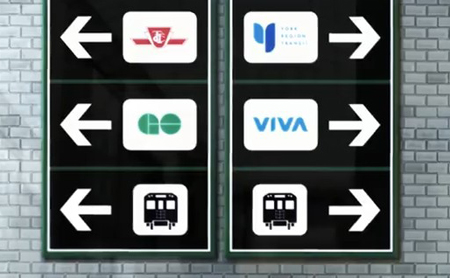
Last Friday, Metrolinx released its interim Benefits Case Analysis (BCA) for the Yonge North Subway extension.
The BCA was developed by Metrolinx in collaboration with the City of Toronto, the Regional Municipality of York and the Toronto Transit Commission. The analysis looked at two subway options, and a bus rapid transit option.
Here are the key findings:
- The subway options have a far greater positive impact on the environment, economy, land development and community than the BRT.
- The economic impacts of the subway options are considerable – creating 21,800 person-years of employment.
- Both subway options provide better service and reliability than the BRT. The BRT is not as reliable as the subway and would likely experience substantial overcrowding in peak hours.
- The BRT is not considered a long term solution.
- The BRT is likely limited by technology, and would not have sufficient capacity for the long-term needs of the corridor.
The proposed subway extension will meet up with the rapidways along Hwy. 7, which will soon get under construction. The combination of the rapidways and a connecting subway on Yonge St. creates a viable alternative to driving and will make it much easier for people to travel between York Region and Toronto.
While we would like to see the Yonge Subway extension proceed immediately, we know that projects of this magnitude can’t happen overnight. We will continue to work with all stakeholders and analyze the overall network elements, such as GO electrification impacts, the TTC capacity study at Yonge/Bloor, as well as the Downtown Relief Line.
The benefits of this project are significant and long-term. We will continue to work with all levels of government to ensure the funding is in place to keep this project moving forward.
The executive summary of the interim BCA is available here.

2 replies on “Metrolinx’s interim report recommends subway over BRT on Yonge”
Very true. For the cost of the subway to RHC, you probably could build LRT up to at least Eagle Drive.
DaleA: Thanks you for your comments. The Yonge subway extension is the most forward-looking option, meaning that it will meet the needs of both current and future commuters for generations to come. This is an important consideration given that we are in the heart of the GTA and York Region is growing at an unprecedented rate. By 2031, it is estimated that 1.5 million residents and more than 800,000 jobs will be located here.
Compared to BRT or LRT which would only be short-term measures, subways move more people more easily and more efficiently. As a result, they have a greater positive impact on our environment by encouraging more people to take transit and leave their cars at home. Subways also lead to more transit-oriented development in response to people’s desire to live close to great transit service.
The Yonge subway extension is the spine of a seamless rapid transit system and provides better connectivity between urban centres across the GTA. For the user and potential user, introducing an additional transfer would be very discouraging. Richmond Hill/Langstaff Urban Growth Centre is a transportation gateway hub and the appropriate terminus of the subway extension where people can easily connect with GO Train/Bus, Viva, York Region Transit and the future 407 transitway.
Funny how the BCA didn’t examine the option of subway to Steeles and then an LRT line going up Yonge in York Region.
Its obvious that BRT and a subway differ huge in capacity, capabilities and cost, so its curious that the middle option was left out.